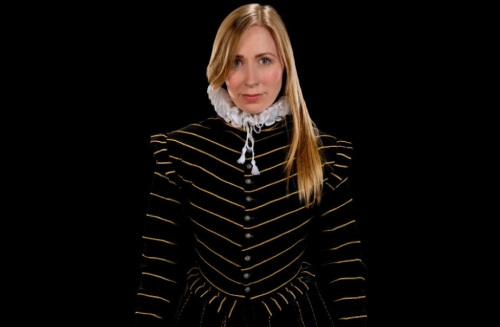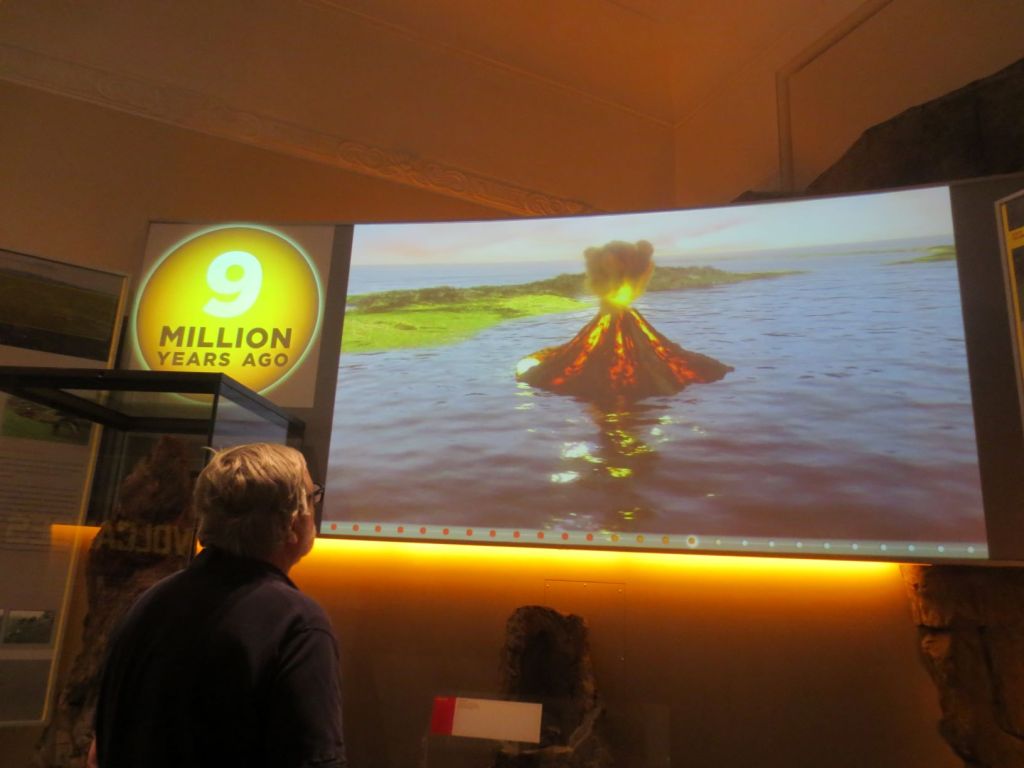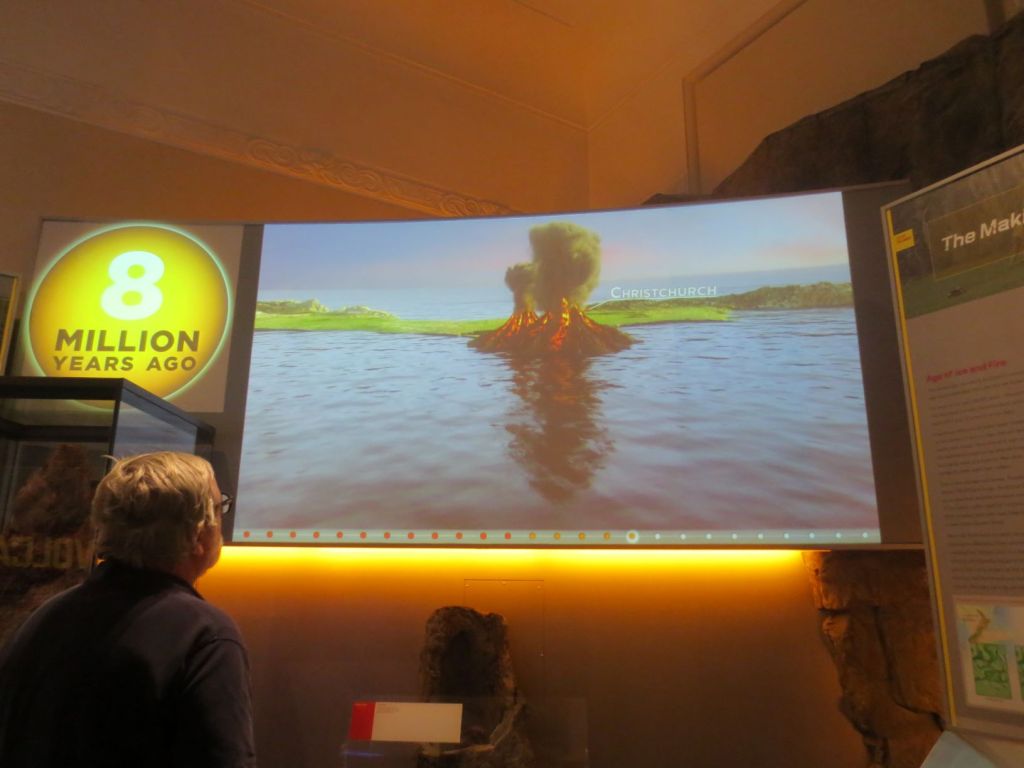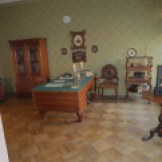First, a little bit of catching up…
In Napier, Tim went to the aquarium while I put my feet up with a book.
-

-
Penguins
-
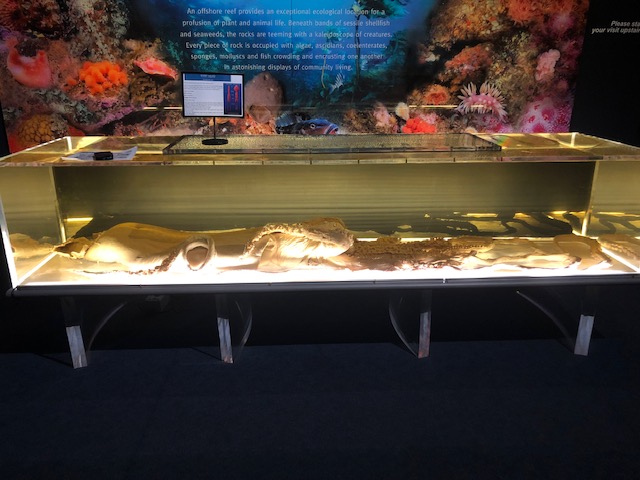
-
Giant squid
So, back to Wednesday in Auckland!
 After a scrumptious breakfast in the hotel (the Scenic, on Queen Street) we headed off to the wharf, not far from the Maritime Museum. It was a beautiful morning, sun shining with a light breeze, so a trip across to Devonport on the ferry seemed like a good idea. And even though as the day wore on there were intermittent flurries of wind and rain, for the most part the day stayed congenial. We have been very lucky.
After a scrumptious breakfast in the hotel (the Scenic, on Queen Street) we headed off to the wharf, not far from the Maritime Museum. It was a beautiful morning, sun shining with a light breeze, so a trip across to Devonport on the ferry seemed like a good idea. And even though as the day wore on there were intermittent flurries of wind and rain, for the most part the day stayed congenial. We have been very lucky.
Devonport is lovely. I can understand why people would want to commute across the harbour to work in the CBD! We had coffee and friands at a really nice café called Twister Tomato, and then strolled around the shops and admired their lovely houses. Best of all we found a second-hand bookshop called Bookmarks and spent a blissful half hour browsing their extensive collections. I bought three, and so did Tim, so we are going to have to be careful with further purchases, but backlist books of Catherine Chidgey and Kirsty Gunn are impossible to source in Australia so it would have been daft not to buy them.
 Back on the mainland, we went to the Auckland War Memorial Museum. The architecture is neo-classical with Roman columns inside and out, and entablature on the exterior features scenes of war on the frieze. Inside, it’s what I call a traditional museum, (i.e. the kind I like), with collections focussing on the natural world, NZ’s geological history, and a representative collection of classical artefacts from Egypt, Greece, Rome and China.
Back on the mainland, we went to the Auckland War Memorial Museum. The architecture is neo-classical with Roman columns inside and out, and entablature on the exterior features scenes of war on the frieze. Inside, it’s what I call a traditional museum, (i.e. the kind I like), with collections focussing on the natural world, NZ’s geological history, and a representative collection of classical artefacts from Egypt, Greece, Rome and China. 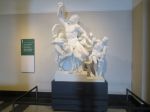 There were also a couple of replicas of Greek statuary including the Laocoon and the Dying Gaul, and I think this is a good idea: it’s a very long way to travel for students studying these classical civilisations to see the originals, and just as the V&A in London has replicas for its students, so the Auckland Museum enhances its collection of original artefacts with these life-sized replicas as well.
There were also a couple of replicas of Greek statuary including the Laocoon and the Dying Gaul, and I think this is a good idea: it’s a very long way to travel for students studying these classical civilisations to see the originals, and just as the V&A in London has replicas for its students, so the Auckland Museum enhances its collection of original artefacts with these life-sized replicas as well.
They have a very good fossil collection. (I am fascinated by fossils, and have my own small collection at home, including a trilobite). Here’s the slideshow, including a giant ammonite and a reconstruction of the extinct giant moa.
This slideshow requires JavaScript.
They also have a good (if somewhat disconcerting) exhibition about volcanoes. NZ doesn’t just have to worry about devastating earthquakes, volcanic eruptions in their cities is a possibility too. An animation shows how volcanic eruptions from the sea reshaped these islands over millions of years: my photos don’t capture it all that well, but it’s one of the best exhibits I’ve seen on this topic.
 Upstairs is dedicated to the War Memorial and associated exhibits, including a real Spitfire on display, and a poignant cabinet of POW’s handwritten stories. New Zealanders served in many theatres of war, and so there are cards written by people captured everywhere from Germany to Crete and of course in Singapore as well. As well as the exhibits you’d expect to see about WW1 and WW2, there was also an exhibit about women’s war service, and one about peace-keeping operations as well.
Upstairs is dedicated to the War Memorial and associated exhibits, including a real Spitfire on display, and a poignant cabinet of POW’s handwritten stories. New Zealanders served in many theatres of war, and so there are cards written by people captured everywhere from Germany to Crete and of course in Singapore as well. As well as the exhibits you’d expect to see about WW1 and WW2, there was also an exhibit about women’s war service, and one about peace-keeping operations as well.

And I had my first Bookish Moment of the trip. (The visit to Katherine Mansfield’s birthplace, you may recall, didn’t work out because the house was closed for the duration). In a delightfully idiosyncratic collection donated by a gentleman called Mackelvie, there was this: ivory mini-busts of Voltaire and Rousseau. (The man at the front isn’t anybody, the signage just says he’s a man, so why he’s at the front in the way I do not know!)
For dinner we went to a restaurant that claimed to serve Japanese-influenced European dishes—but they don’t. They serve Japanese dishes with the inclusion of mismatched European ingredients. such as bits of shredded raw potato, red radish instead of daikon and (a mortal sin, IMO) mustard drowning out the subtle flavour of freshwater caviar. The dishes were the usual unpalatable raw fish in feeble sauces. If you like Japanese cuisine, and Tim does, then it was fine, if grotesquely overpriced. If you don’t, and I really don’t, then the only ‘European’ dish in a seven-course degustation that you might like will be dessert. And this is a shame because Tim chose this particular restaurant because he thought a fusion cuisine might suit us both. But the irresponsible table service was something else again: the tables are very close together, so all night long anything the waitstaff said to us was drowned out by a boisterous couple next to us, made worse by the way the waitstaff kept replenishing the father’s glass with sake and beer so he became louder and louder and more and more obnoxious. Not a happy experience at all.
Photo credit:
Auckland War Memorial Museum by User:Antilived – Own work, CC BY-SA 4.0, https://commons.wikimedia.org/w/index.php?curid=3493161
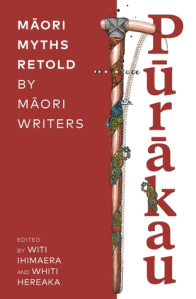 The event was an opportunity for readings from some of the Māori writers who contributed to the book Pūrākau: Māori Myths Retold. The readers were some that I knew: Tina Makereti (see my reviews of two of her novels); Paula Morris (see my review of Rangatira); and Nic Low (whose short story collection Arms Race was a giveaway for Indigenous Literature Week in 2014). Other readers were Kelly Joseph, Regan Taylor and Whiti Hereaka, and the whole performance was accompanied by multi-instrumentalist Kingsley Melhuish who blended brass and percussion instruments with conch shells…
The event was an opportunity for readings from some of the Māori writers who contributed to the book Pūrākau: Māori Myths Retold. The readers were some that I knew: Tina Makereti (see my reviews of two of her novels); Paula Morris (see my review of Rangatira); and Nic Low (whose short story collection Arms Race was a giveaway for Indigenous Literature Week in 2014). Other readers were Kelly Joseph, Regan Taylor and Whiti Hereaka, and the whole performance was accompanied by multi-instrumentalist Kingsley Melhuish who blended brass and percussion instruments with conch shells… We have just seen a magnificent stage adaptation of Virginia Woolf’s Orlando. (See my review of the book
We have just seen a magnificent stage adaptation of Virginia Woolf’s Orlando. (See my review of the book 